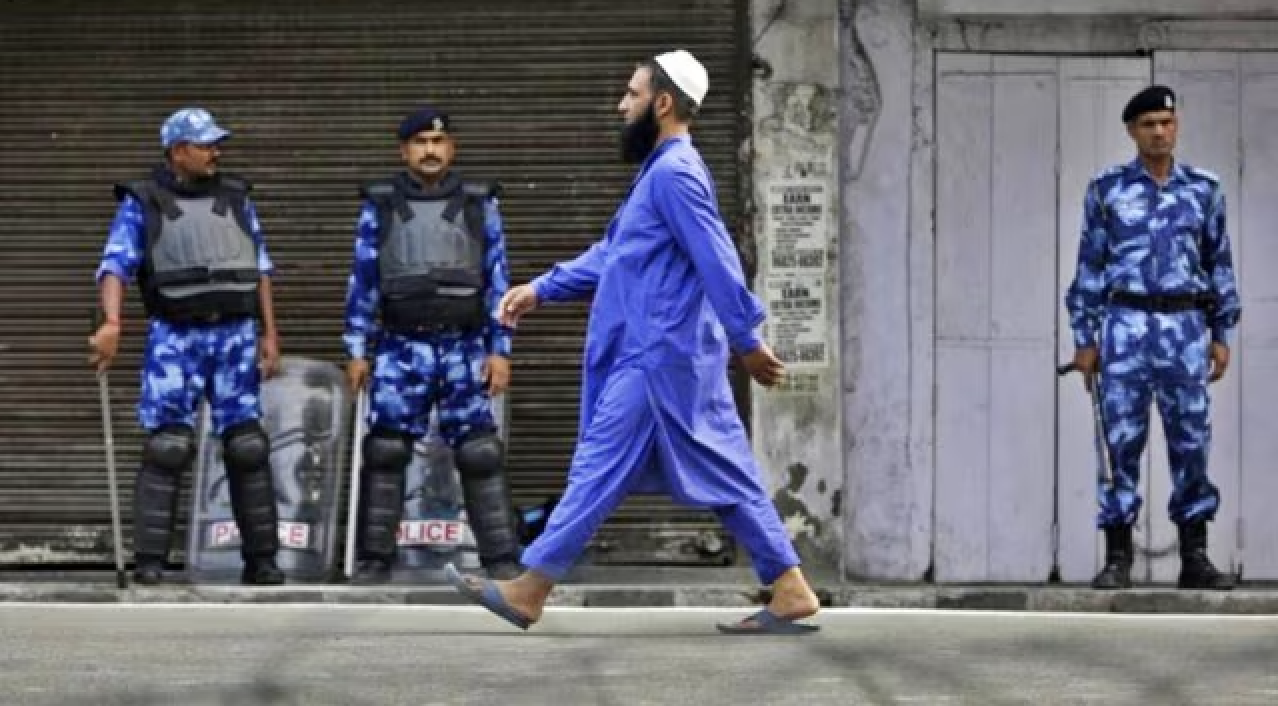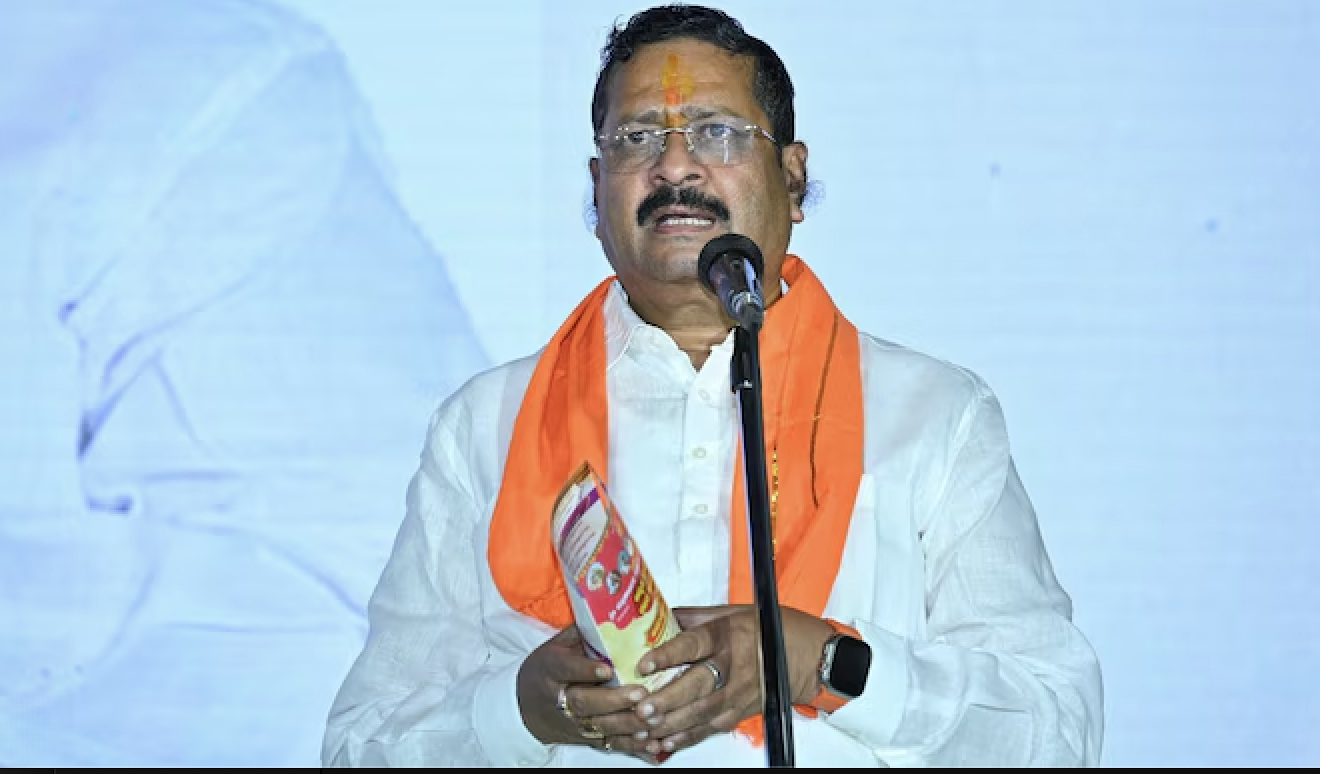
Communal violence escalates in India as the US embraces its source.
By Pieter Friedrich
Two months ago, Atul Keshap — who was then temporarily serving as America’s acting Ambassador to India — concluded his tenure with one final act: a visit to the headquarters of the RSS paramilitary.
It was, said John Sifton of Human Rights Watch, a meeting which sent such “a terrible message” that he compared it to if the US Ambassador to Germany in 1933 had attended a Nazi rally at Nuremberg — which, of course, did not happen. It was a legitimization and normalization of the world’s oldest, fastest-growing, and most powerful fascist movement.
Barely two weeks later, Ambassador Keshap’s RSS meet was followed by Indian Prime Minister Narendra Modi’s latest visit to the US. In contrast to the stomach-churning dance of love that former President Trump regularly performed with Modi, many outlets suggested that the Indian premier received the new Biden administration’s cold shoulder. After speaking alongside Vice-President Harris, who emphasized the importance of defending democracy (while suggesting that such a vision may not yet have been fully achieved), Modi then travelled to the White House where, after Biden first declined to receive him personally, the president then highlighted, to Modi’s face, the present-day urgency of Gandhi’s “message of non-violence, respect, [and] tolerance.” Many interpreted the overall reception of Modi as a sign that the Biden administration is gently pressing him on human rights issues and subtly hinting at their concern.
However, Keshap’s earlier meeting with the RSS — which saw him staging and subsequently promoting a photo-op with the head of the paramilitary which is the primary party responsible for plunging India headlong into a fascist nightmare — seemed to negate the subtlety and gentleness of the message that the Biden administration was supposedly trying to send to Modi.
India’s ruling Hindu nationalist BJP, with Modi at its head, is essentially the political wing of the RSS, of which Modi is also a member. The RSS, founded in 1925, is uniformed, armed, all-male, and has approximately six million members, not to mention the membership of its dozens of special interest subsidiaries. It seeks to homogenize, militarize, and politicize the vast diversity that is the Hindu religion as well as to eliminate and/or assimilate all non-Hindus in India by forcing them into second-class citizenship, ejecting them from the country, or simply exterminating them. It is widely implicated in acts of mass violence against religious minorities and has a heavily documented history of inspiration by and interaction with the European fascist movements of Mussolini and Hitler.
Keshap’s RSS meet — which he first announced, in glowing terms, through his official channels — seemed to send a far stronger message about the US government’s position than did the Biden administration “hint, hinting” at Modi. Even amidst the spreading hatred and simmering violence that has slowly ramped up in India under the past seven years of the Modi regime, the US government, it seems, will continue to prioritize a policy of geopolitical juggling that attempts to balance ever-shifting world powers, views foreign relations as a zero-sum game, and only selectively speaks on international human rights concerns when there is political leverage to be gained by doing so.
The consequences are clear. Modi has been expanding his xenophobic agenda with blitzkrieg speed ever since his reelection in 2019, and yet, in the weeks after Keshap’s meeting with the RSS, India has witnessed a nationwide explosion of anti-minority violence unprecedented in decades. Meanwhile, the complicity of BJP elected officials has never been more blatant.
At the beginning of this October, the BJP Chief Minister of the State of Haryana urged people to form vigilante militias of 500 to 1000, “attack the agitating farmers with sticks,” and be willing to go to jail. He assured them that, if they did so, they would emerge as heroes whose “names will be etched in history.” Around the same time, the Deputy Minister for Home Affairs — the Indian Central Government’s agency in charge of internal law and order — called for violence against the ongoing Farmers Protest in a viral video where he warned that they must “face” his “discipline.” Shortly after, his son — allegedly — rammed his jeep into a column of protesting farmers, murdering four Sikhs.
Meanwhile, in the central Indian state of Chhattisgarh, an RSS-affiliated mob of thousands paraded through the streets chanting: “Whenever Hindus have awakened, Muslims have fled this country. When Muslims are slaughtered, then they will chant the name of Ram.” In front marched the son of the former BJP Chief Minister of the state as well as a BJP Member of Parliament. Throughout the day, the mob attacked mosques as well as Muslim-owned businesses and homes. Not long before, in the neighbouring state of Madhya Pradesh, another mob marched through the streets shouting “shoot the traitors,” a slogan first raised against Muslim protestors in New Delhi last year by a BJP Cabinet Minister.
Throughout October, Muslims continued to face disruption of their religious gatherings, lynchings, and organized attacks across India — especially in the state of Tripura, where the fires are still burning; in one incident, a mob was filmed streaming through the streets chanting, “In Tripura, Muslims won’t be accepted.”
Alongside the vehicular slaughter of Sikh farmers and the open calls for genocide of Muslims, a recent report documented that, in the first nine months of this year, there were over 300 violent hate crimes against Indian Christians by Hindu nationalist attackers across 21 states — around 95 per cent of which were instances of mob violence. Those shocking statistics spiked on October 3rd when thirteen attacks against Christians were reported in a single day — mobs of hundreds invaded their homes and church services, beating them and dragging them out. The flames of hatred are constantly fanned by bloodthirsty speeches from Hindu nationalist demagogues, such as one who, flanked by BJP leaders, recently called people to “ignite the fire” and “behead” Christians.
Meanwhile, in Chhattisgarh, the local BJP has reportedly been ordered to make lists of and spy on Christians in order to “fill the jails” with them; in Karnataka, the state’s Intelligence Department has been ordered to spy on churches.
The backdrop to this current situation is seven years of BJP rule which were used to pass a host of national and state laws enacting a Hindu nationalist agenda that is viciously enforced by growing masses of RSS-linked vigilantes who are ever more boldly and openly associated with the ruling party.
From passing laws criminalizing freedom of religious conversion to laws banning interfaith marriage, and laws banning beef to laws which essentially premise citizenship on a religious basis, the regime is doing everything that it can to legislatively implement the fundamental ideology of the RSS, which is that being an Indian means being a Hindu and that anyone in India who is not a Hindu does not belong there. The RSS has repeatedly put this supremacist ideology into violent practice over the past 30 years, typically with the complicity of BJP elected officials, but it has never before held such an ironclad grip on national power. Today, all the most hateful teachings of the RSS’s founding fathers – including that Indian Christians and Muslims are traitors and that Hitler’s method of treating minorities was a good model to follow – have taken root and sprung up across the country with the sanction of the regime in New Delhi.
Whatever spirit of “live and let live” once prevailed in India has, under the Modi regime, been largely transformed into a spirit of “submit or die.” In the US, a few Americans are just now waking up to the reality that India is no longer a stable, fast-developing democracy ruled by law and guided by a love for tolerance and pluralism. Yet the average American is barely aware that there is a swiftly escalating human rights crisis in India — let alone has any clue at all about the RSS and its agenda.
The US government, however, has long known about the dangers of the RSS, repeatedly warning about it in reports from the CIA, the State Department, and the US Commission on International Religious Freedom. Under the current regime in India, the Biden administration could take many different small steps: halt arms trading, reduce foreign aid, or even just make conversations about human rights a condition of bilateral talks. Instead, shockingly, it took a huge step in the opposite direction by embracing the source of the present chaos.
India is falling — or, I would argue, has already fallen — to fascism. China and Russia had already slid into totalitarianism long back, but the world’s largest democracy is now joining them. Where India goes is where South Asia goes, and the rise of the world’s largest fascist State bodes ill for us all.
The situation urgently demands not only the utmost concern of all humanitarian-minded people around the world but also deep introspection from the US government about how it will react. However, as genocidal forces are flooding across India right now, time is of the essence, and America must swiftly decide which side of history it will fall on before it is too late.
This story first appeared on twocircles.net






